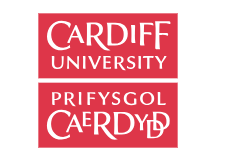Environmental Sciences courses
Cardiff University

Duration : 1 Years
Intake : Sep
IELTS : 6.5
TOEFL : 90
PTE : 62
University Course Details URL : Visit Website
Level : Postgraduate
Tuition & fees : £ 23,450 Per Year
Cardiff University Contact Details
1 Pace Plaza, New York, NY, 10038, USA
Email: intlgradadmission@pace.edu
Phone: +18667223338
About Environmental Hazards (msc) in Cardiff University
Our society is facing unprecedented environmental hazards driven by climate change and the rapid expansion of the world population. Global and local disasters cause many fatalities and cost billions of pounds every year. Earth scientists with expertise in the specialist hazard field are able to mitigate the impact of natural hazards, such as floods, earthquakes, landslides, volcanoes and coastal erosion, and environmental hazards created by people, such as air and water pollution.
On this course you will develop an advanced understanding of environmental hazards and technical expertise in risk assessment, including crucial skills in numerical and statistical modelling, remote sensing and data analysis. There will be plenty of opportunities to gain hands-on experience using state-of-the-art field and laboratory equipment and high-level, professional software. You will handle the latest modelling methods using remote sensing data from satellites such as CubeSat constellations and Sentinel, which are used to image the surface of the Earth.
With the skills required to predict, track and mitigate disasters, you will be an attractive candidate for a range of employment and research opportunities within government, government agencies, environmental consultancies, flood risk, utility and insurance companies. Plus, you will become part of the global effort to make our society more resilient against natural disasters as outlined in the Sendai framework and endorsed by the United Nations General Assembly.
Academic qualification equivalents
-
degree from a recognized university
English language requirements
- IELTS : 6.5
- TOEFL IBT: 90
- PTE: 62
Cardiff University Highlights
| University Type | Public |
| Campus Setting | Urban |
| Establishment Year | 1883 |
| Application cost | 20/25 GBP |
| Average Cost of Attendance | 32,000 GBP |
| Mode of Program | Full time, distance, and online |
| Graduate Job Rate | 95.7% |
Cardiff University Cost of Attendance
The estimated fees for the 2020/2021 academic session are presented in the table below.
| Fees | Undergraduate (GBP) | Postgraduate (GBP) |
|---|---|---|
| Tuition Fee | 17,700 – 21,950 | 21,950 - 23,450 |
| Rent (including bills) | 5,320 | 6,920 |
| Food | 1,400 | 1,820 |
| Books and copying | 400 | 500 |
| Social | 1,080 | 1,400 |
| Clothes | 225 | 300 |
| Laundry and toiletries | 225 | 420 |
| Travel | 900 | 1,200 |
| Telephone/mobile and TV license | 450 | 600 |
| Total | 27,700 – 31,950 | 35,110 – 36,610 |
Know more about Studying in USA
| Tuition Fees in USA (1st Year Average) | BE/Btech: USD 28300 | MS: USD 22693 | BBA: USD 26616 | MBA: USD 29558 | BSc: USD 29418 | MA: USD 20452 | MIS: USD 22133 | MFin: USD 37683 | MEng: USD 29558 | MIM: USD 35301 | MEM: USD 23254 | MArch: USD 34741 | MFA: USD 28857 | BHM: USD 27176 |
| Average Accomodation & Food Costs in USA | USD 700 to 1000 Per Month |
| Entrance Exams in USA | TOEFL: 86 | IELTS: 6.5 | PTE: 60 | GRE: 309 | GMAT: 560 | SAT: 1177 |
| Work and Study in USA | Permitted for 20 hours/week with a valid study permit. Know More |
| Post Study Work Permit in USA | One to Two Years after graduation depending on the course. |
| Cost of Student Visa in USA | USD 160 |
| Student Visa in USA | F1 Visa for USA allows you study permit in USA in full time academic courses. Any accredited school, college, university, academic institute, seminary, or conservatory in USA must accept you beforehand to apply for F1 visa in USA. Know More |
| Intakes in USA | There are Three Intakes in USA: Fall (August-September), Spring (January) Know More |
| Top Job Sectors in USA | Health Care, Education, Construction, Hospitality & Tourism, Business Services, Finance. |
| Economy in USA | GDP Growth of 2.1% (Q4 2019), The Larges Economy of the World by Nominal |